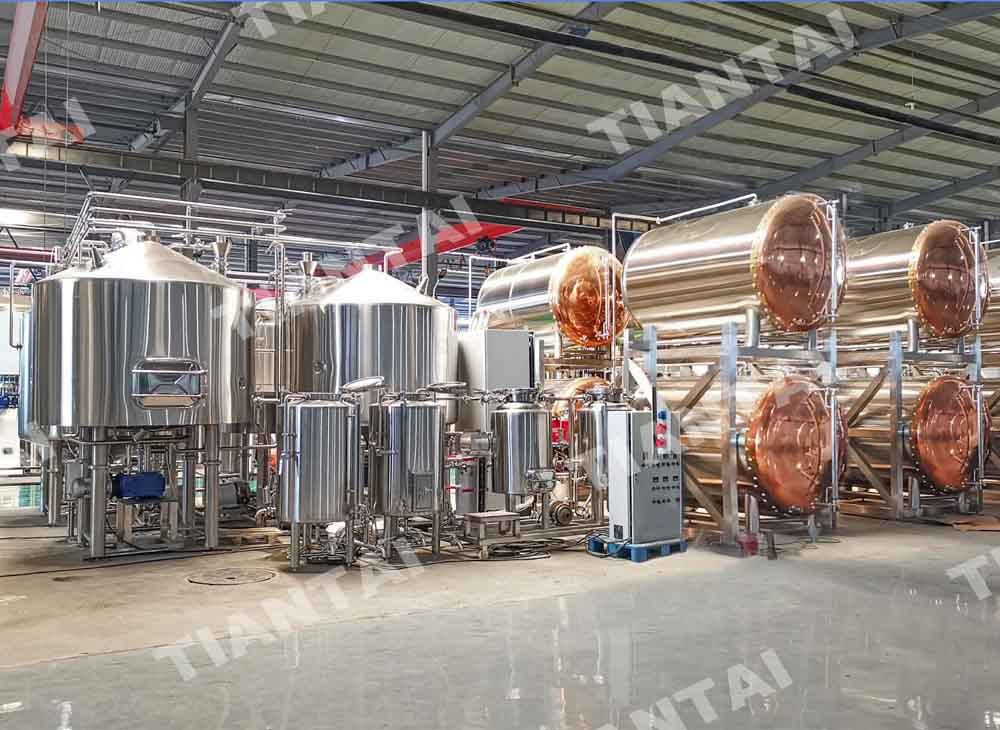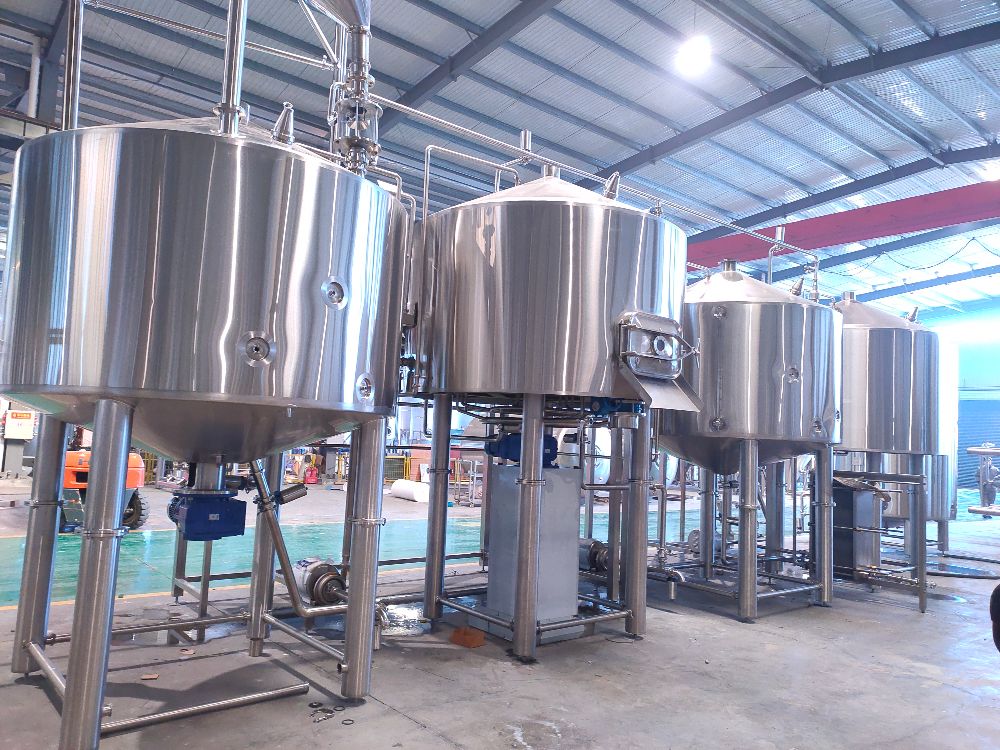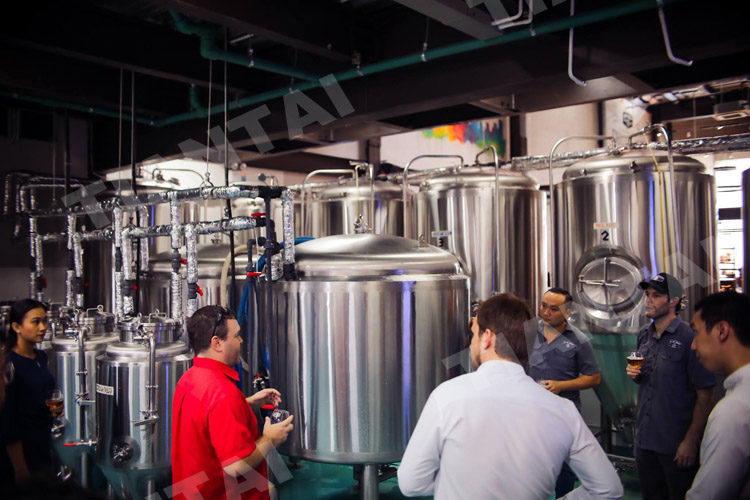What is Multi Infusion Mashing for Beer Brewing
- Sep 25, 2021
- 176
- tiantai
Multi action mixture mashes refer to mashes with even more than one temperature level remainder not counting the mash-out remainder in brewhouse system. There are different mash relaxes that can be of rate of interest for the maker:
acid remainder: for chemical mash acidification and also no-rush mash pH therapy. Given that no substantial conversion procedures happen at this temperature level there is no issue having the mash remainder at this temperature level for a prolonged quantity of time.
Ferulic acid remainder: This is a little bit various from the routine acid remainder as this remainder is largely for the generation of ferulic acid which wheat beer yeasts transform to 4VG, the phenolic personality of Bavarian Wheat beers.
Relax temperature levels closer to 122 * F (50 * F) stress the generation of brief size healthy proteins (amino acids) and also temperature levels closer to 133 * F (55 * C) result in even more tool chained healthy proteins (excellent for head retention as well as body). Well changed contemporary malts, which currently have greater degrees of amino acids, might profit from a healthy protein remainder closer to 133 * F (55 * C) or do not need a healthy protein remainder at all.
saccharification remainder: This can be done as a solitary saccharification remainder like it is utilized for solitary mixture mashes or several relaxes which stress beta as well as alpha amylase individually. The latter can lead to much better fermentability of the wort because it obtains one of the most out of the beta amylase as well as restriction dextrinase which are the major manufacturers of fermentable sugars.
When straight warm is utilized to enhance the mash temperature level in between the relaxes, the temperature level ought to just increase 2-4 * F (1-2 * C) per min. Going quicker might take the chance of burning of the mash.
The following is an instance of a 2 action mixture mash that functions well with reasonably well altered German malts:

To run as mash timetable like this, compute the strike water temperature level for your grain, a grist/water proportion of 1.25 qts/lb (~ 2.5 L/kg) as well as a remainder temperature level of 129-133 * F (53-55 * F). The later enhancement of even more water will certainly not have any type of considerable result on this pH. While the mash is relaxing at the healthy protein remainder bring around 60-70% of the quantity of water that you made use of as strike water to a boil. Due to the healthy protein remainder and also restricted beta amylase as well as restriction dextrinase task throughout that remainder, the resulting wort fermentability will certainly be greater contrasted to a solitary mixture mash at the very same saccharification remainder temperature level.
You can likewise utilize this formula to compute the quantity of water that requires to be included in elevate the mash temperature level [Palmer, 2006]:
Wa = (T2 - T1)( 0.2 G + Wm)/( Tw - T2).
Wa = The quantity of mixture water included.
Wm = The overall quantity of water in the mash.
T1 = The first mash temperature level.
T2 = The target mash temperature level.
Tw = the real temperature level of the mixture water.
G = The quantity of grain in the mash.
The enhancement of boiling water up until the brand-new remainder temperature is gotten to is extra trusted as it can account for variables that the above formula can not. As well as because the resulting mash will certainly be rather slim, mixing it as well as obtaining the warmth uniformly dispersed for a trusted mash temperature analysis is not as hard as it remains in a ticker solitary mixture mash.
Some makers are worried that a thinner mash results in a lot more tannin removal, yet fairly the reverse holds true. German makers favor thinner mashes for fragile and also lighter tinted beers as it will certainly create even more of the preferable initial wort as well as considering that much less sparge water requires to be utilized much less tannins are drawn out throughout lautering.
The chemical task additionally gains from the altering mash density. A thicker mash throughout the healthy protein remainder improves the protoelytic task and also a thinner mash throughout the saccharification remainder improves the amylase task.
Mash-out can likewise be gotten to though one more mixture with boiling water or with a preparation if there is area left in the mash tun. The last is covered in Preparation Mashing.
Multi action mixture mashes refer to mashes with even more than one temperature level remainder not counting the mash-out remainder in brewhouse system. To run as mash timetable like this, compute the strike water temperature level for your grain, a grist/water proportion of 1.25 qts/lb (~ 2.5 L/kg) and also a remainder temperature level of 129-133 * F (53-55 * F). The later enhancement of even more water will certainly not have any kind of considerable impact on this pH. While the mash is relaxing at the healthy protein remainder bring around 60-70% of the quantity of water that you made use of as strike water to a boil. When the healthy protein remainder is over usage a warmth immune vessel to scoop some boiling water right into the mash and also mix to blend it well. Due to the healthy protein remainder and also minimal beta amylase and also limitation dextrinase task throughout that remainder, the resulting wort fermentability will certainly be greater contrasted to a solitary mixture mash at the very same saccharification remainder temperature level.
Edited by Nicole
Sales manager of Tiantai
Email: [email protected]
acid remainder: for chemical mash acidification and also no-rush mash pH therapy. Given that no substantial conversion procedures happen at this temperature level there is no issue having the mash remainder at this temperature level for a prolonged quantity of time.
Ferulic acid remainder: This is a little bit various from the routine acid remainder as this remainder is largely for the generation of ferulic acid which wheat beer yeasts transform to 4VG, the phenolic personality of Bavarian Wheat beers.
Relax temperature levels closer to 122 * F (50 * F) stress the generation of brief size healthy proteins (amino acids) and also temperature levels closer to 133 * F (55 * C) result in even more tool chained healthy proteins (excellent for head retention as well as body). Well changed contemporary malts, which currently have greater degrees of amino acids, might profit from a healthy protein remainder closer to 133 * F (55 * C) or do not need a healthy protein remainder at all.
saccharification remainder: This can be done as a solitary saccharification remainder like it is utilized for solitary mixture mashes or several relaxes which stress beta as well as alpha amylase individually. The latter can lead to much better fermentability of the wort because it obtains one of the most out of the beta amylase as well as restriction dextrinase which are the major manufacturers of fermentable sugars.
When straight warm is utilized to enhance the mash temperature level in between the relaxes, the temperature level ought to just increase 2-4 * F (1-2 * C) per min. Going quicker might take the chance of burning of the mash.
The following is an instance of a 2 action mixture mash that functions well with reasonably well altered German malts:

To run as mash timetable like this, compute the strike water temperature level for your grain, a grist/water proportion of 1.25 qts/lb (~ 2.5 L/kg) as well as a remainder temperature level of 129-133 * F (53-55 * F). The later enhancement of even more water will certainly not have any type of considerable result on this pH. While the mash is relaxing at the healthy protein remainder bring around 60-70% of the quantity of water that you made use of as strike water to a boil. Due to the healthy protein remainder and also restricted beta amylase as well as restriction dextrinase task throughout that remainder, the resulting wort fermentability will certainly be greater contrasted to a solitary mixture mash at the very same saccharification remainder temperature level.
You can likewise utilize this formula to compute the quantity of water that requires to be included in elevate the mash temperature level [Palmer, 2006]:
Wa = (T2 - T1)( 0.2 G + Wm)/( Tw - T2).
Wa = The quantity of mixture water included.
Wm = The overall quantity of water in the mash.
T1 = The first mash temperature level.
T2 = The target mash temperature level.
Tw = the real temperature level of the mixture water.
G = The quantity of grain in the mash.
The enhancement of boiling water up until the brand-new remainder temperature is gotten to is extra trusted as it can account for variables that the above formula can not. As well as because the resulting mash will certainly be rather slim, mixing it as well as obtaining the warmth uniformly dispersed for a trusted mash temperature analysis is not as hard as it remains in a ticker solitary mixture mash.
Some makers are worried that a thinner mash results in a lot more tannin removal, yet fairly the reverse holds true. German makers favor thinner mashes for fragile and also lighter tinted beers as it will certainly create even more of the preferable initial wort as well as considering that much less sparge water requires to be utilized much less tannins are drawn out throughout lautering.
The chemical task additionally gains from the altering mash density. A thicker mash throughout the healthy protein remainder improves the protoelytic task and also a thinner mash throughout the saccharification remainder improves the amylase task.
Mash-out can likewise be gotten to though one more mixture with boiling water or with a preparation if there is area left in the mash tun. The last is covered in Preparation Mashing.
Multi action mixture mashes refer to mashes with even more than one temperature level remainder not counting the mash-out remainder in brewhouse system. To run as mash timetable like this, compute the strike water temperature level for your grain, a grist/water proportion of 1.25 qts/lb (~ 2.5 L/kg) and also a remainder temperature level of 129-133 * F (53-55 * F). The later enhancement of even more water will certainly not have any kind of considerable impact on this pH. While the mash is relaxing at the healthy protein remainder bring around 60-70% of the quantity of water that you made use of as strike water to a boil. When the healthy protein remainder is over usage a warmth immune vessel to scoop some boiling water right into the mash and also mix to blend it well. Due to the healthy protein remainder and also minimal beta amylase and also limitation dextrinase task throughout that remainder, the resulting wort fermentability will certainly be greater contrasted to a solitary mixture mash at the very same saccharification remainder temperature level.
Edited by Nicole
Sales manager of Tiantai
Email: [email protected]

.jpg)


